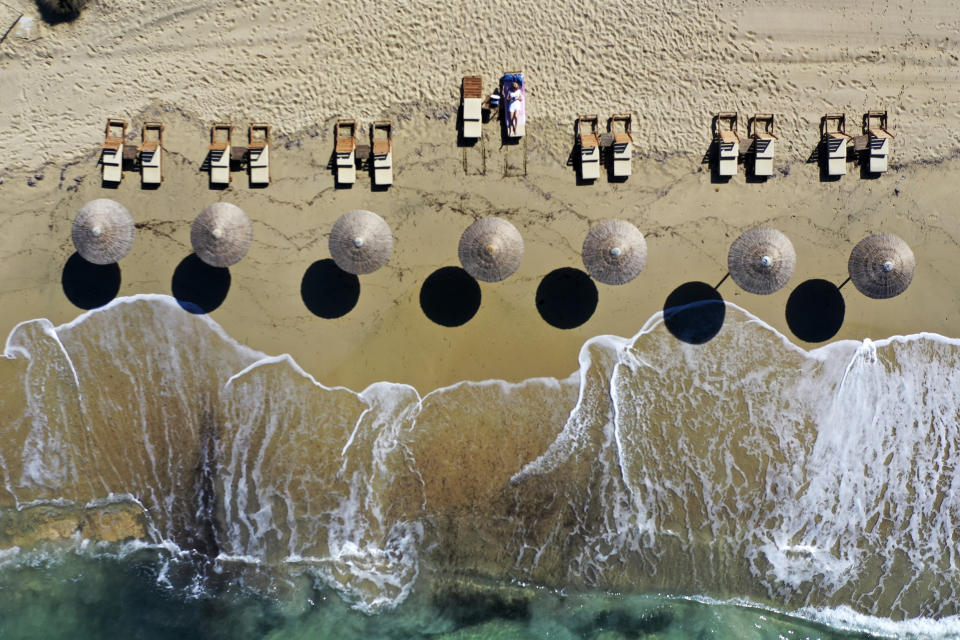Where and when can Americans travel abroad?
International travel is back on the agenda this summer for millions of Americans who are fully vaccinated, but with some countries already open to U.S. travelers — and many still not — it is challenging to figure out when and where to go.
According to the Centers for Disease Control and Prevention, it is safe for vaccinated Americans to travel internationally, keeping in mind the COVID-19 travel destination advisories on this regularly updated list.
Americans are already able to visit Mexico and parts of the Caribbean, as well as Greece, Iceland, Croatia, and Turkey. But most of Europe still remains off limits, or with restrictions.

On May 16, Italy began welcoming passengers arriving on government-approved “Covid-tested” flights from several countries, including the U.S. Travel requirements for these flights include a negative Covid-19 test before departure, at boarding, and on arrival in Italy.
Delta Air Lines, American Airlines, and United Airlines are already offering some Covid-tested to flights to Rome and Milan from several U.S. cities, with more flights and cities to be added to the schedule later this summer.
Various countries have announced various opening dates for travelers from the U.S., including Spain, which will open its borders to vaccinated tourists on June 7.
“They're welcome — more than welcome — without restrictions nor health controls," Spain's Prime Minister Pedro Sanchez told reporters at a tourism fair last month.
France is expected to re-open to tourists on June 9, but cautions that "it is not yet known if travelers from the United States will be included among the foreign tourists allowed to enter." French officials recommend travelers visit the website for the French Embassy in the United States for the latest information.
Ireland announced it will open its borders to U.S. travelers, one of its two largest tourism markets, on July 19.
As more countries join the list, "it’s going to be a hodgepodge this summer,” said Scott Keyes of Scott’s Cheap Flights. “For most countries, you’ll need to either bring proof of vaccination or a recent negative test."
Lending encouragement is the fact that this week, seven of the 27 countries in the European Union —Bulgaria, the Czech Republic, Denmark, Germany, Greece, Croatia, and Poland — began using the E.U.'s digital Covid certificate, known as the Digital Green Certificate, one month ahead of schedule. Other countries will adopt the program, which verifies the Covid-19 status of E.U. citizens, in the next few weeks. Those countries will then decide if they want to extend the program to travelers from the U.S.
Non-essential travel, which includes tourism, is still restricted between the U.S. and Canada.
Ahead of the Summer Olympics, the U.S. State Department issued a travel advisory warning against travel to Japan. “Most of Asia-Pacific is not currently open and is unlikely to open before autumn at the earliest,” Keyes said.
In mid-May, the United Kingdom rolled out a “traffic light system” for international travel, which puts countries on red, amber, and green lists. While the lists are set to be reviewed at the end of June, the U.S. is currently categorized as “amber,” which mean anyone arriving from America must fill out a passenger locator form, provide notification of a negative test result prior to travel, quarantine for 10 days on arrival, and a take a Covid test on day 2 and day 8 after arrival.
While countries may be constantly changing their entry requirements in response to Covid case counts and conditions, “generally speaking, the one-way ratchet is towards more reopening,” Keyes told NBC News. Travelers should check the U.S. State Department website for updates, as well as individual government and embassy websites, before making any bookings.
However, flexibility and generous cancellation polities are still available — and recommended — when booking hotel stays, airline tickets and cruises, or buying passes to theme parks, museums, and attractions.
“Demand is strong, causing availability to be limited in some places, while also driving up rates,” said Misty Belles, managing director at luxury travel network Virtuoso.
“While Europe is slowly opening this summer, fall is when people will likely feel more confident about setting their travel plans,” and when rates may settle down, Belles said.

